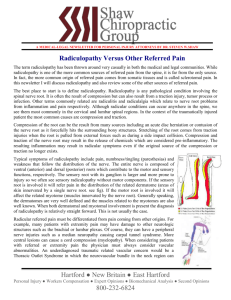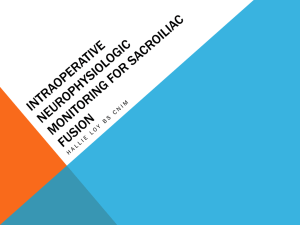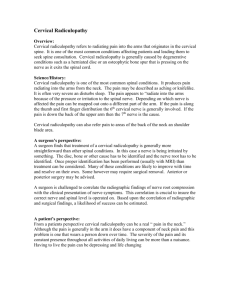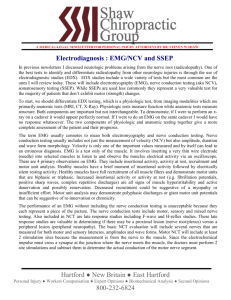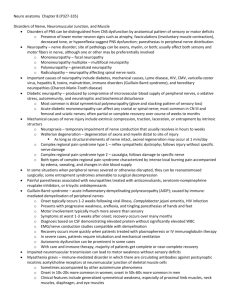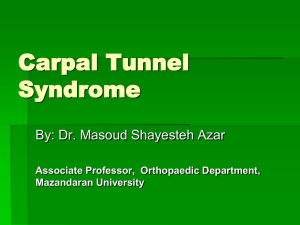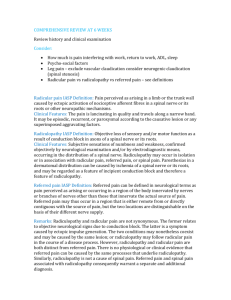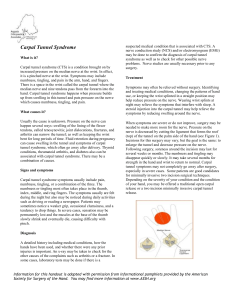Neural Scan vs EMG: Small Fiber Nerve Conduction Study Comparison
advertisement
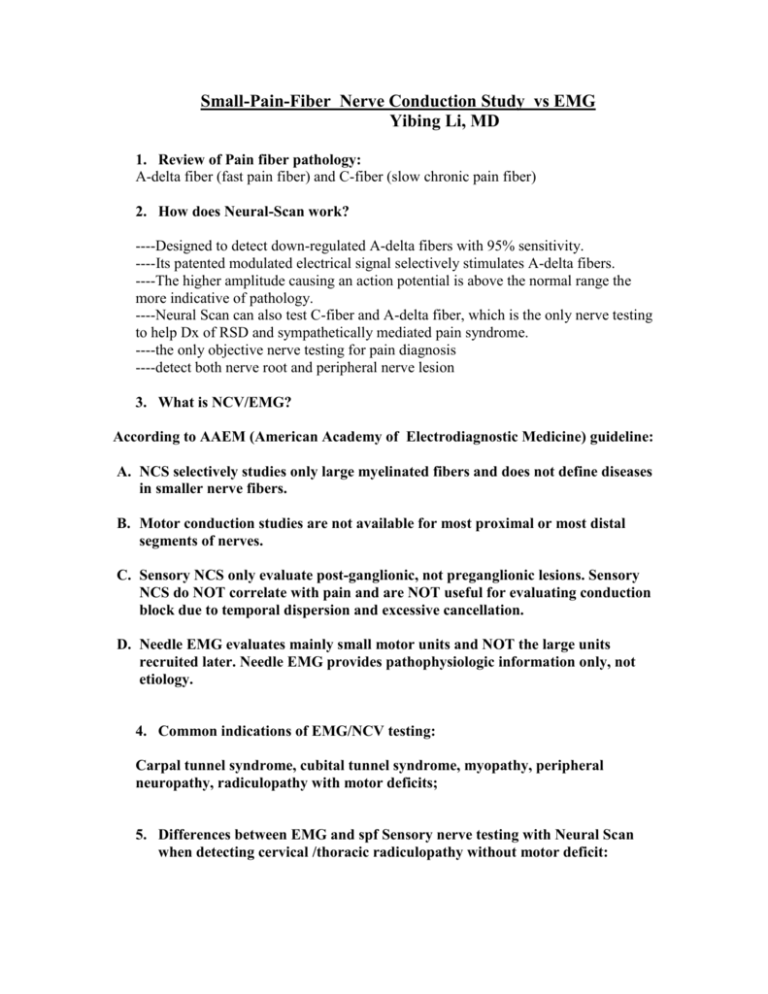
Small-Pain-Fiber Nerve Conduction Study vs EMG Yibing Li, MD 1. Review of Pain fiber pathology: A-delta fiber (fast pain fiber) and C-fiber (slow chronic pain fiber) 2. How does Neural-Scan work? ----Designed to detect down-regulated A-delta fibers with 95% sensitivity. ----Its patented modulated electrical signal selectively stimulates A-delta fibers. ----The higher amplitude causing an action potential is above the normal range the more indicative of pathology. ----Neural Scan can also test C-fiber and A-delta fiber, which is the only nerve testing to help Dx of RSD and sympathetically mediated pain syndrome. ----the only objective nerve testing for pain diagnosis ----detect both nerve root and peripheral nerve lesion 3. What is NCV/EMG? According to AAEM (American Academy of Electrodiagnostic Medicine) guideline: A. NCS selectively studies only large myelinated fibers and does not define diseases in smaller nerve fibers. B. Motor conduction studies are not available for most proximal or most distal segments of nerves. C. Sensory NCS only evaluate post-ganglionic, not preganglionic lesions. Sensory NCS do NOT correlate with pain and are NOT useful for evaluating conduction block due to temporal dispersion and excessive cancellation. D. Needle EMG evaluates mainly small motor units and NOT the large units recruited later. Needle EMG provides pathophysiologic information only, not etiology. 4. Common indications of EMG/NCV testing: Carpal tunnel syndrome, cubital tunnel syndrome, myopathy, peripheral neuropathy, radiculopathy with motor deficits; 5. Differences between EMG and spf Sensory nerve testing with Neural Scan when detecting cervical /thoracic radiculopathy without motor deficit: -----Sensory nerve testing has NO NEEDLE, NO SHOCK!! Non-invasive , painfree study -----Higher sensitivity 95% vs 29% of EMG without motor deficits. -----Detect all pain fibers and dorsal nerve roots lesions (including preganglion or DRG pathology) -----cheaper, well-tolerance by the patients. -----Objectively detect malingering and drug-seeking activity. ----Accurately validate the location, severity and chronicity of radiculopathy (Wonderful for the doctors and patients!) 6. Common indications of Neural Scan testing: ----neck pain, back pain ----cervical, thoracic radiculopathy, lumbar radiculopathy ----piriformis syndrome ----peripheral polyneuropathy ----brachial plexopathy, lumbar plexopathy screening ----carpal tunnel syndrome, cubital tunnel syndrome, tarsal tunnel syndrome, neuroma ----headache, trigemital neuralgia, occipital neuralgia, RSD, CRPS 7. Contraindication with Neural-scan: none - -“-Neural Scan is the gold standard for pain diagnosis” ---------Dr. Randal Cork, Director of Pain Medicine LSU


